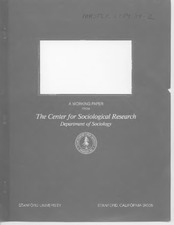| dc.creator | Perlaki, Kinga M. | |
| dc.creator | Barchas, Patricia R. | |
| dc.date.accessioned | 2017-08-16T21:01:30Z | |
| dc.date.available | 2017-08-16T21:01:30Z | |
| dc.date.issued | 2017-08-16 | |
| dc.identifier.uri | https://hdl.handle.net/1969.1/161176 | |
| dc.description.abstract | a. This TP is an attempt to identify brain mechanisms associated with the finding that mere exposure to words, patterns, and other stimuli often leads to liking, even when the exposure is too brief to produce conscious awareness. The authors investigate recognition accuracy of very brief (subliminal) exposure to stimuli following instructions to report either which stimulus they thought was familiar (left brain) or which the liked better (right brain). Results showed that participants instructed to process stimuli using right brain were more accurate. The authors interpreted the data as showing that right brain processing, which occurs outside of conscious awareness, is responsible for the subliminal “familiarity leads to liking” phenomenon. | en |
| dc.description.sponsorship | This work was supported, in part, by The Office of Naval Research (SRO-OOl: N00014-79-C00796). | en |
| dc.language.iso | en_US | |
| dc.relation.ispartofseries | Stanford Working Papers;84-2 | |
| dc.rights | Attribution-NoDerivs 3.0 United States | en |
| dc.rights.uri | http://creativecommons.org/licenses/by-nd/3.0/us/ | |
| dc.subject | Cerebral Balance; Recognition Accuracy; Familiarity Leads to Liking | en |
| dc.title | Cerebral Balance, Recognition Accuracy, and Confidence when Task Performance Requires the Use of Preconsciously Acquired Information | en |
| dc.type | Working Paper | en |
| local.department | Sociology | en |
| dc.identifier.doi | 1984 | |



